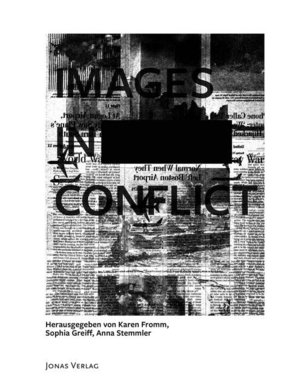| Verlag | Jonas Verlag |
| Auflage | 2018 |
| Seiten | 560 |
| Format | 17,3 x 23,1 x 3,9 cm |
| Gewicht | 1340 g |
| ISBN-10 | 3894455624 |
| ISBN-13 | 9783894455620 |
| Bestell-Nr | 89445562A |
Fotografische und filmische Bilder von Krisen- und Konfliktsituationen verändern sich in Ästhetik und Gebrauchsweisen - und geraten damit selbst ins Visier. Zum einen haben sich im Zuge der digitalen Entwicklungen die Möglichkeiten der Bildproduzent_innen und die Distributionskanäle von Bildern vervielfältigt. Das erweitert Perspektiven und ermöglicht neue Erzählformen. Zum anderen geht damit eine Erschütterung des klassischen bildjournalistischen Selbstverständnisses einher. Es wird hinterfragt, inwieweit Fotografien noch als Zeugnisse wirken können. Sie bewegen sich im Spannungsfeld von Wahrheitsansprüchen zwischen Authentizität, Dokumentation und Propaganda. Ihre Kontextualisierungen und Rahmungen stellen Bedeutungen her - und erfordern Reflexion. 'Images in Conflict - Bilder im Konflikt' widmet sich dem Verhältnis von Konflikten und ihrer Medialisierung und richtet dabei den Fokus auf aktuelle Visualisierungsstrategien und 'Bilderkriege'. In vier Kapiteln 'Akteure und Perspekt iven', 'Nichts als die Wahrheit', 'Sichtbar unsichtbar', 'How to Make Images Matter?' werden verschiedene Aspekte der Bilder in Konflikten beleuchtet. Die Publikation richtet sich an Fotograf_innen, Medienschaffende und Theoretiker_innen, um einen Dialog zwischen fotografischer Bildpraxis und Diskursen der Bildwissenschaften anzuregen, der für beide Seiten wesentliche neue Perspektiven eröffnet.
"This is not a book only about the representation of conflict. A better way to think of it is as a thoughtful study of imagery in transition during a period of cultural instability, using conflict as the common, unifying context that brings together a disparate collection of thinkers and practitioners and delivers new insight into how images matter." (Stephen Mayes, Executive Director Tim Hetherington Trust)Photographic and filmic images of situations of crisis and conflict change in terms of aesthetics and applications, thereby becoming targets themselves. On the one hand, image producers and the distribution channels for images have multiplied in the course of digital developments. This broadens perspectives and enables new narrative forms. On the other hand, these changes are associated with an upheaval of classical photojournalistic self-perception. This also raises the question to what extent photographs can still function as witnesses. In the realm of claims to truth, they m ove among authenticity, objectivity and propaganda. Their contextualisation and framing create meanings and require reflection. Images in Conflict / Bilder im Konflikt is devoted to the relationship between conflicts and their mediatisation; it focuses on current visualisation strategies and 'image wars'.

